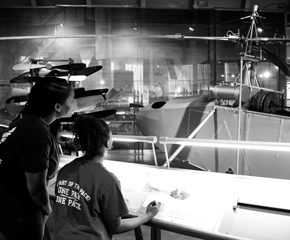The Sweetgrass Basket: An African American Tradition
Visitors to the “Lowcountry,” the coastal areas of South Carolina and Georgia — which include the historic cities of Charleston and Savannah — always notice the distinctive stands selling coiled "Gullah" or sweetgrass baskets.
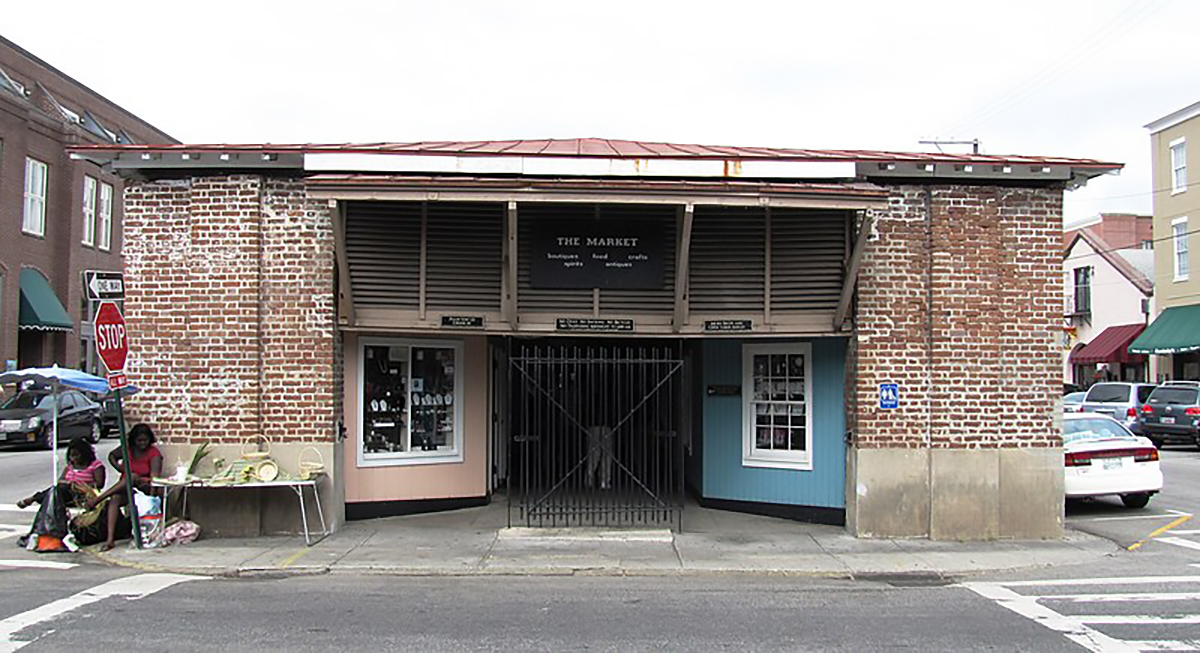
In this image, Gullah sweetgrass basket vendors are visible selling their wares in front of the Old City Market Shed, Charleston, SC, 2010. Photograph by Brian Stansberry.
Throughout Charleston and especially in neighboring Mount Pleasant, vendors line roads selling these homemade crafts, some exquisitely intricate, to locals and visitors alike.
The art of sweetgrass basket weaving is practiced in coastal and barrier island communities from North Carolina to Florida, a region known as the Gullah-Geechee Cultural Heritage Corridor. The Gullah-Geechee people are the descendants of enslaved West Africans who worked on coastal plantations. Because of their isolation, they were able to hold onto many traditions during multiple generations of enslavement in the United States.
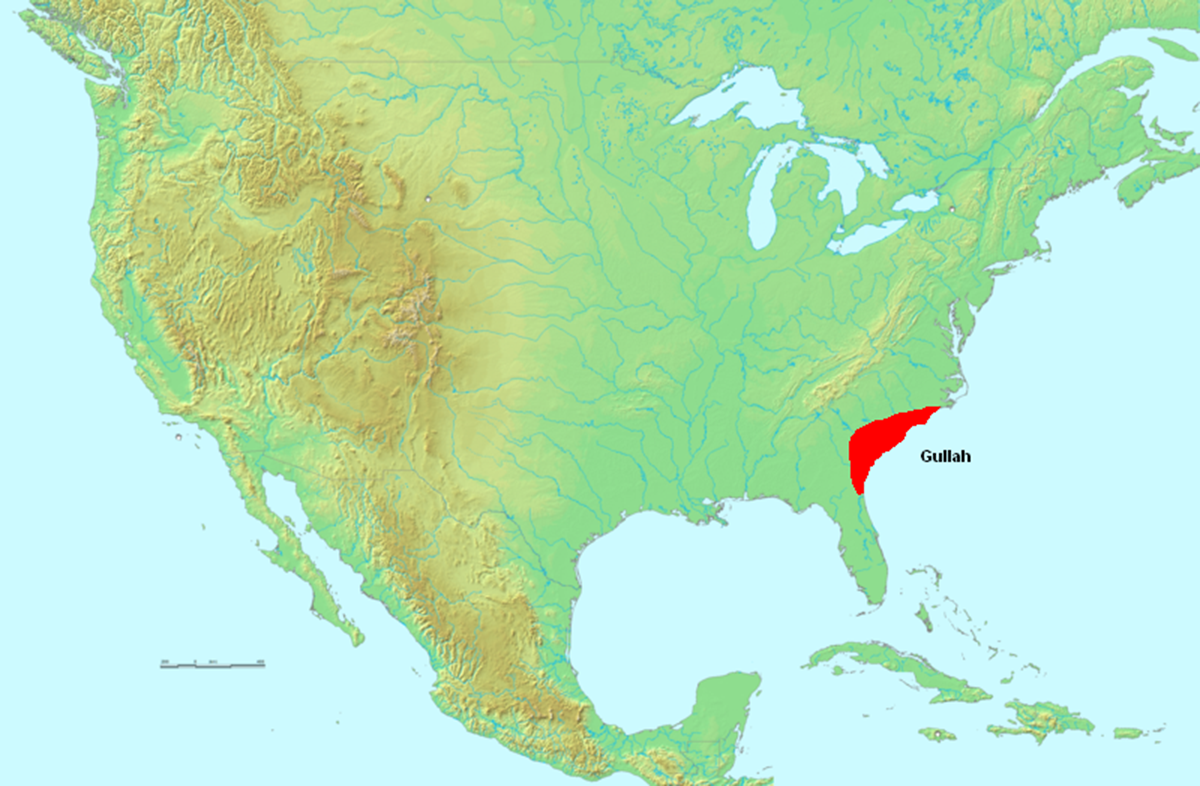
The Gullah region once extended from southeast North Carolina to northeast Florida.
Slave traders abducted African people from the west coast of Africa to the South Carolina Lowcountry beginning in the early 18th century. As part of their work on the rice plantations, enslaved persons made these utilitarian baskets, generally for the storage of dry goods, although some of the baskets were so tightly woven that they could be used to store liquids too. Flat baskets called "fanners" were used in the winnowing of rice. Britannica notes that once the rice was harvested and pounded in a pestle with a mortar, a fanner was used to toss it upward into the wind, which blew away the husk, or chaff.
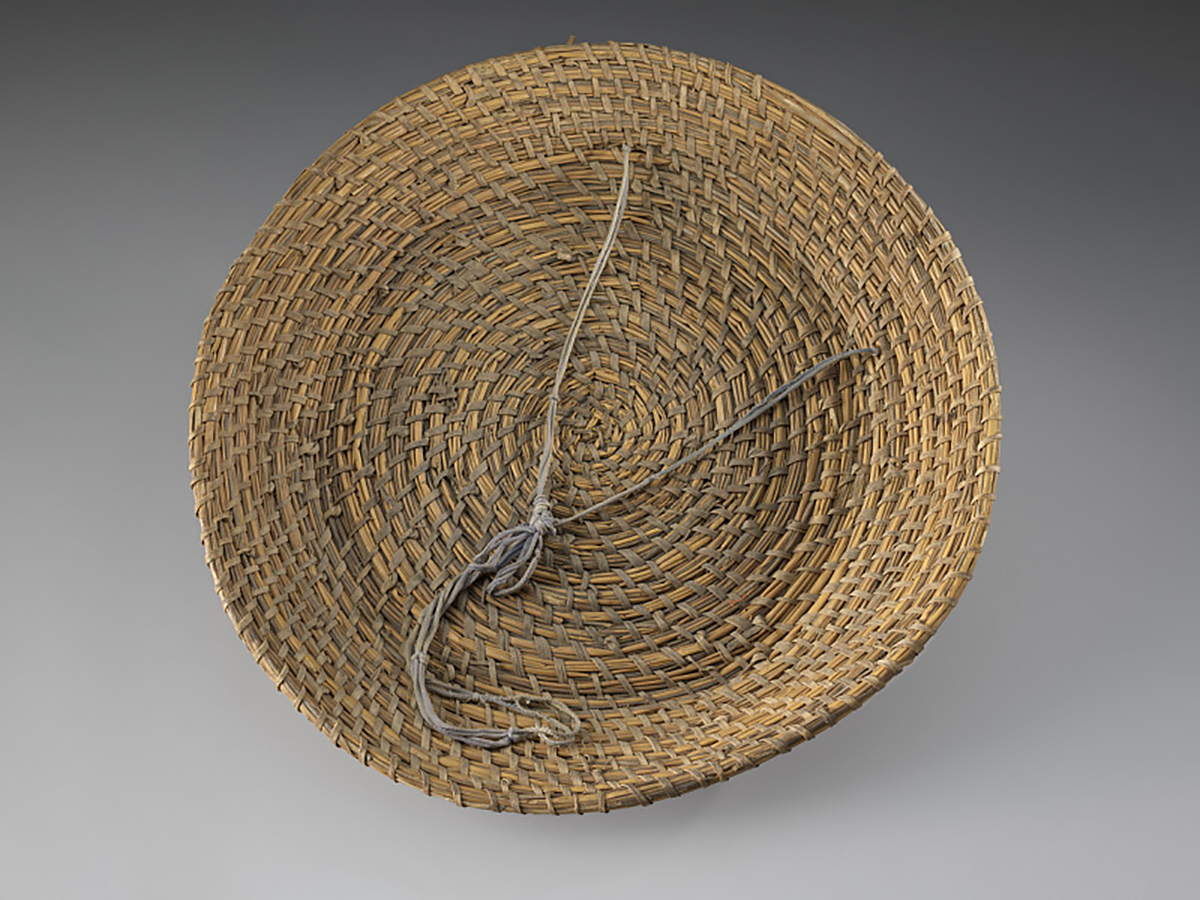
An example of a fanner basket described above, dating to before 1863. From the Collections of the Smithsonian Institution's National Museum of African American History and Culture.
According to Britannica, among enslaved persons, “baskets were made by using a sewing technique rather than a plaiting or braiding technique, unlike baskets of European origin. Long ropes of needlegrass rush (Juncus roemerianus; called bulrush, rushel, or needlegrass) were coiled, one on top of the other, and the coils were held together with strips of white oak bark or saw palmetto. Today makers prefer to use sweetgrass with needlegrass rush and longleaf pine needles (Pinus palustris), sewing these with palmetto leaf (Sabal palmetto), and they produce designs without dyes by alternating the natural colors of the dried yellowish green sweetgrass, reddish brown, black needlegrass rush, and green longleaf pine needles. The only tools required for basket production were scissors and 'sewing bones'— filed down teaspoon handles — or 'nail bones' (made from flattened nails or rib bones of a cow or pig). The 'bones' were used to tuck the palmetto around the coils."
In general, men collected the materials that women transformed into baskets. Depending on its size and function, a single basket could take weeks or even months to make according to Britannica. These baskets (which remained the same for more than 300 years) relied on the sharing of traditional knowledge across many generations, as mothers taught their daughters the technique to create them.
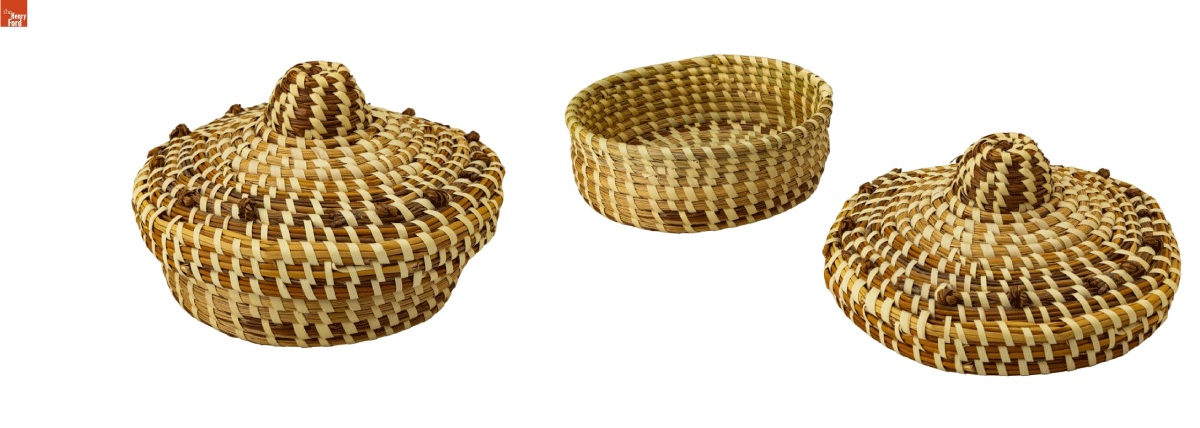
A sweetgrass basket from 2011, made by Carol Lee Howard, born in 1958 in Mount Pleasant, South Carolina. / THF802432 (left), THF802433 (right)
This basket is a typical representation. It recently came into the Henry Ford collection from a donor who acquired it in South Carolina. When it was offered for the collection, all we had was a price tag, with the maker's name and a receipt from 2011. After a bit of sleuthing, we located and contacted the maker, Carol Lee Howard.
Ms. Howard grew up in a family where sweetgrass baskets were a family tradition, spanning generations. She says that her mother, grandmother, and all her aunts and siblings learned how to make these baskets for "extra income." As a young person, she was reluctant to make them until her sister Lillie Howard (who died in 2011) challenged her to make them in the early 1980s. Carol Lee accepted her sister's challenge and now views the making of these baskets as part of her family's heritage.
She said that she became serious about making baskets in the early to mid-1990s, selling them at fairs in Charleston, and through local venues. Today, she spends her time taking care of her grandchildren and occasionally making baskets. This recent acquisition represents Ms. Howard's expertise as a basket maker — and the enduring traditions of resourcefulness and resilience found in American craft movements.
Charles Sable is Curator of Decorative Arts at The Henry Ford.

